MaryAnn Bernal's Blog, page 290
April 21, 2014
The Phil Naessens Show: The Indiana Pacers and Memphis Grizzlies Need to be Bad Boys Now!
http://phillipnaessens.wordpress.com/2014/04/21/the-phil-naessens-show-the-indiana-pacers-and-memphis-grizzlies-need-to-be-bad-boys-now/

On today’s Phil Naessens Show Tom Lewis joins Phil to discuss the Atlanta Hawks upset win over the Indiana Pacers in Game 1 of their Eastern Conference Playoff match up, the troublesome match-ups the Hawks present and how Indiana can get back on track. Amar joins Phil for part 1 of their two part discussion regarding ESPN’s 30 for 30 documentary on the Detroit Pistons. Kevin Lipe joins Phil to talk about the Memphis Grizzlies game 1 loss to the Oklahoma City Thunder, Grizzlies Coach Dave Joerger and what the Grizzlies have to do to get back in this series.

On today’s Phil Naessens Show Tom Lewis joins Phil to discuss the Atlanta Hawks upset win over the Indiana Pacers in Game 1 of their Eastern Conference Playoff match up, the troublesome match-ups the Hawks present and how Indiana can get back on track. Amar joins Phil for part 1 of their two part discussion regarding ESPN’s 30 for 30 documentary on the Detroit Pistons. Kevin Lipe joins Phil to talk about the Memphis Grizzlies game 1 loss to the Oklahoma City Thunder, Grizzlies Coach Dave Joerger and what the Grizzlies have to do to get back in this series.

Published on April 21, 2014 17:40
Chilean Mummies Reveal Signs of Arsenic Poisoning
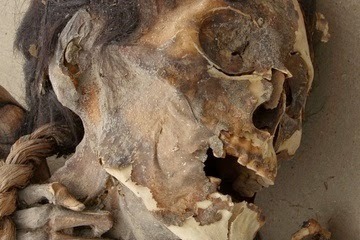 As expected, the team detected arsenic in the mummy's hair and in the soil. They also discovered skin conditions indicative of arsenic poisoning.
As expected, the team detected arsenic in the mummy's hair and in the soil. They also discovered skin conditions indicative of arsenic poisoning.By Joseph Castro, Live Science Contributor
People of numerous pre-Columbian civilizations in northern Chile, including the Incas and the Chinchorro culture, suffered from chronic arsenic poisoning due to their consumption of contaminated water, new research suggests.
Previous analyses showed high concentrations of arsenic in the hair samples of mummies from both highland and coastal cultures in the region. However, researchers weren't able to determine whether the people had ingested arsenic or if the toxic element in the soil had diffused into the mummies' hair after they were buried.
In the new study, scientists used a range of high-tech methods to analyze hair samples from a 1,000- to 1,500-year-old mummy from the Tarapacá Valley in Chile's Atacama Desert. They determined the high concentration of arsenic in the mummy's hair came from drinking arsenic-laced water and, possibly, eating plants irrigated with the toxic water.
"In Chile, you have these sediments that are rich in arsenic because of copper-mining activities in the highlands," which expose arsenic and other pollutants, said lead study author Ioanna Kakoulli, an archaeological scientist at the University of California, Los Angeles. "When it rains, the arsenic can leach out into the rivers."
In fields ranging from forensics to archaeology, hair is widely used to gain insight into the lives of modern and past peoples. Unlike other biological samples, such as bone and skin tissue that change over time, hair remains stable after it forms (keratinizes). This feature, along with hair's steady growth rate, means that it can provide a chronological record of the substances that previously circulated in the blood.
In the past, scientists have analyzed the hair samples of the mummies from the pre-Columbian populations that lived in Chile's Atacama Desert between A.D. 500 and 1450. The remains showed patterns of chronic poisoning, which some researchers have suspected was due to these populations' consumption of water contaminated with arsenic. But the methods didn't allow them to determine how the arsenic got into the mummies' hair.
"They didn't map where the arsenic is precipitated on the hair — they just took it and dissolved it," Kakoulli told Live Science. With this technique, you cannot tell if the arsenic wound up in the hair externally, or if it was ingested and traveled through the bloodstream first, she said.
To learn more about the possible arsenic poisoning of the ancient people from northern Chile, Kakoulli and her colleagues looked at a naturally preserved mummythat was buried in the TR40-A cemetery in the Tarapacá Valley of the Atacama Desert. Using portable techniques that were noninvasive and nondestructive, they imaged and analyzed the mummy's skin, clothes and hair, as well as the soil encrusting the mummy.
As expected, the team detected arsenic in the mummy's hair and in the soil. They also discovered skin conditions indicative of arsenic poisoning. Though these findings were suggestive of arsenic ingestion, they weren't definitive, so the researchers collected hair samples to analyze further in the lab.
Finding the source
Kakoulli and her colleagues imaged the hair samples with a very-high-resolution scanning electron microscope. They also subjected the samples to various tests with the synchrotron light source — a large particle accelerator that analyzes materials with intense, focused X-ray beams — at the Lawrence Berkeley National Laboratory in California, allowing them to map the distribution of the elements and minerals in the hair.
Their tests revealed a uniform, radial distribution of arsenic in the hair. If the hair had been contaminated from arsenic in the soil, the toxic element would have only coated the surface, Kakoulli said. Comparisons of the arsenic in the soil and hair also showed the soil contained much lower concentrations of the element.
Furthermore, the dominant form of arsenic in the hair was a type called arsenic III, while the inorganic arsenic in surface water and groundwateris mostly arsenic V. Studies have suggested that the body "biotransforms" ingested arsenic into arsenic III.
"The results are consistent with modern epidemiological studies of arsenic poisoning by ingestion," Kakoulli said, adding that the technological approach used in the study could prove useful to forensic investigations and toxicity assessments in archaeology.
The team is now using the same approach to see if the ancient people of the Tarapacá Valley used certain hallucinogens, as some individuals were buried with exotic Amazonian seeds and various hallucinogenic paraphernalia. If the people buried with the items didn't use the hallucinogens, it would suggest they were shaman or doctors who used the hallucinogenic plants to aid other people, the researchers said.
"It then becomes a question about the level of interaction they had with the people of the Amazon, because the seeds aren't from Chile," Kakoulli said. "They would've had to have known the properties of the seeds and where to get them."
The study was published in January in the journal Analytical Chemistry.
http://www.livescience.com/44838-chilean-mummies-show-arsenic-poisoning.html

Published on April 21, 2014 16:51
Ancient Puppy Paw Prints Found on Roman Tiles
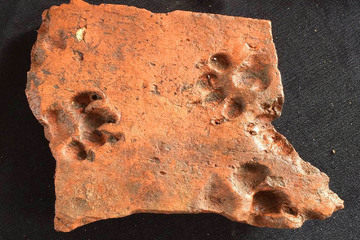 A dog pushed its paws into this ancient Roman tile before it could dry.Credit: Adam Slater, Wardell Armstrong Archaeology
A dog pushed its paws into this ancient Roman tile before it could dry.Credit: Adam Slater, Wardell Armstrong Archaeology By Megan Gannon, News Editor
The paw prints and hoof prints of a few meddlesome animals have been preserved for posterity on ancient Roman tiles recently discovered by archaeologists in England.
"They are beautiful finds, as they represent a snapshot, a single moment in history," said Nick Daffern, a senior project manager with Wardell Armstrong Archaeology. "It is lovely to imagine some irate person chasing a dog or some other animal away from their freshly made tiles."
The artifacts, which could be nearly 2,000 years old, were found in the Blackfriars area of Leicester, the English city where the long-lost bones of King Richard III were discovered under a parking lot in 2012. Wardell Armstrong Archaeology was brought in to dig at a site where a construction company plans to build student housing.
At least one of the tiles is tainted with dog paw prints, and one is marked with the hoof prints of a sheep or a goat that trampled on the clay before it was dry.
"My initial thought was that it must have been very difficult being a Roman tile manufacturer with these animal incursions going on all the time," Philip Briggs, another Wardell Armstrong archaeologist, told Live Science in an email.
The tiles were found in layers of rubble that had been laid down as a hard base for subsequent floors, but the artifacts' original context is unclear, Daffern said.
"We don't know if the tiles were originally part of an earlier building or were bought in from elsewhere specifically to raise and stabilize ground," Daffern told Live Science in an email.
Leicester was the stronghold of an Iron Age group known as the Corieltauvi tribe, and it remained an important city after the Roman conquest of Britain in the first century A.D., as it was located along the Fosse Way, a Roman road that connected southwestern England with the East Midlands.
The excavators say that, in addition to the animal-printed tiles, they've uncovered Roman tweezers, brooches, coins and painted wall plaster. They've also unearthed traces of a large Roman building — perhaps a basilica, with a peristyle, or columned porch — that was largely robbed of its masonry during the medieval era for other construction projects.
The archaeologists even discovered late Iron Age artifacts, such as several fragments of clay molds that the Corieltauvi tribe likely used to make coins before the Roman rule. Daffern said it's rare to find sites with coin molds, given how closely managed coin production would have been during the Iron Age.
"I think the excavation thus far has significantly multiplied the number of coin mold fragments recovered from Leicester, probably by approximately tenfold," Daffern said in an email.
The excavation is funded by construction company Watkin Jones. The archaeologists are providing updates on Wardell Armstrong Archaeology's blog.
http://www.livescience.com/44910-ancient-dog-paw-prints-roman-tiles.html

Published on April 21, 2014 16:41
The Fix Was in for Ancient Wrestling Match
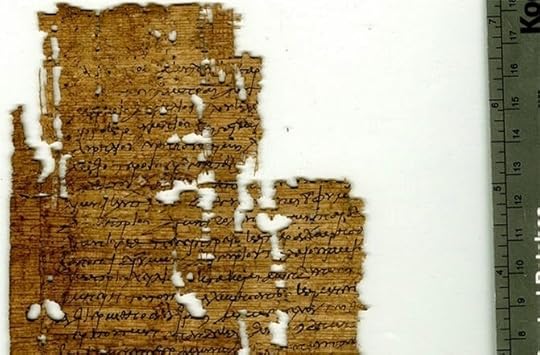 Researchers have deciphered a contract, pictured here, that was written in A.D. 267 between the guarantors of two wrestlers named Nicantinous and Demetrius.
Researchers have deciphered a contract, pictured here, that was written in A.D. 267 between the guarantors of two wrestlers named Nicantinous and Demetrius. by Owen Jarus, LiveScience
Who says only modern-day pro wrestling is fake?
Researchers have deciphered a Greek document that shows an ancient wrestling match was fixed. The document, which has a date on it that corresponds to the year A.D. 267, is a contract between two teenagers who had reached the final bout of a prestigious series of games in Egypt.
This is the first time that a written contract between two athletes to fix a match has been found from the ancient world.
In the contract, the father of a wrestler named Nicantinous agrees to pay a bribe to the guarantors (likely the trainers) of another wrestler named Demetrius. Both wrestlers were set to compete in the final wrestling match of the 138th Great Antinoeia, an important series of regional games held along with a religious festival in Antinopolis, in Egypt. They were in the boys' division, which was generally reserved for teenagers.
The contract stipulates that Demetrius "when competing in the competition for the boy , to fall three times and yield," and in return would receive "three thousand eight hundred drachmas of silver of old coinage …"
There were no pins in this Greek style of wrestling, and the goal of the wrestlers was to throw the other to the ground three times. A wide array of holds and throws were used, a few of which look a bit like a body slam.
The contract includes a clause that Demetrius is still to be paid if the judges realize the match is fixed and refuse to reward Nicantinous the win. If "the crown is reserved as sacred, (we) are not to institute proceedings against him about these things," the contract reads. It also says that if Demetrius reneges on the deal, and wins the match anyway, then "you are of necessity to pay as penalty to my son on account of wrongdoing three talents of silver of old coinage without any delay or inventive argument."
The translator of the text, Dominic Rathbone, a professor at King's College London, noted that 3,800 drachma was a relatively small amount of money — about enough to buy a donkey, according to another papyrus. Moreover, the large sum Demetrius would forfeit if he were to back out of the deal suggests his trainers would have been paid additional money Rathbone said.
http://news.discovery.com/history/archaeology/the-fix-was-in-for-ancient-wrestling-match-140417.htm

Published on April 21, 2014 13:27
Showpitch.com - Those Who Know Belong! #GetDiscovered
Published on April 21, 2014 05:33
History Trivia - Henry VIII ascends the throne of England
April 21
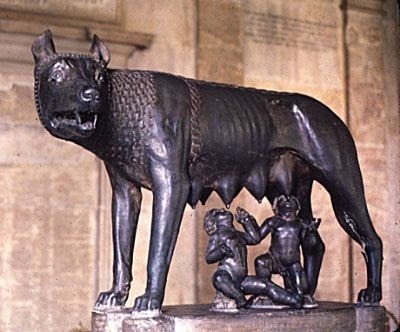
753 BC – Romulus and Remus founded Rome (traditional date).
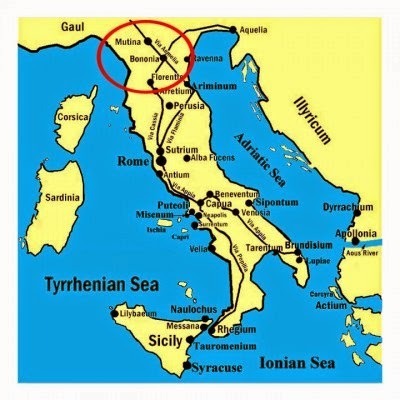
43 BC Battle of Mutina: Mark Antony was again defeated in battle by Aulus Hirtius, who was killed. Antony failed to capture Mutina and Decimus Brutus was murdered shortly after.

1509 Henry VIII ascended the throne of England on the death of his father, Henry VII.


753 BC – Romulus and Remus founded Rome (traditional date).

43 BC Battle of Mutina: Mark Antony was again defeated in battle by Aulus Hirtius, who was killed. Antony failed to capture Mutina and Decimus Brutus was murdered shortly after.

1509 Henry VIII ascended the throne of England on the death of his father, Henry VII.

Published on April 21, 2014 05:29
April 20, 2014
Congratulations Green Wizard Publishing - Celebrating Two Years in the industry
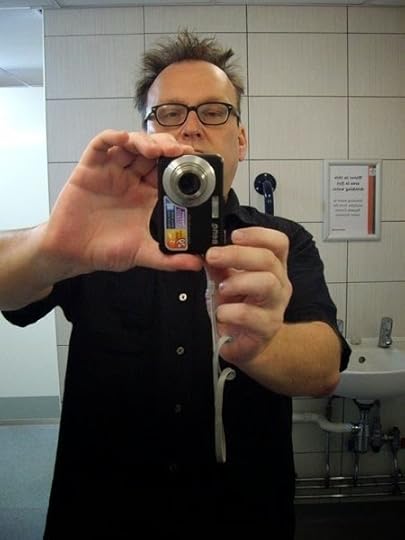
Congratulations to Mark Barry and Green Wizard publishing upon celebrating its second year in a rapidly expanding industry. The accomplishments achieved thus far continue to entice readers on both sides of the pond, piquing interest by offering quality novels in diverse genres.

I, along with your followers, wish you every success throughout the year.

Published on April 20, 2014 16:03
Bet You Didn't Know: Easter Traditions
Published on April 20, 2014 06:27
History Trivia - The last naval battle in Byzantine history occurs
April 20

1303 The University of Rome La Sapienza was instituted by Pope Boniface VIII.

1314 Clement V died. Clement, who owed his election largely to King Philip IV of France, chose to move the Papacy to Avignon, where it remained for more than 60 years. He also had a hand in the trial of the Templars.

1442 Edward IV, King of England, 1461-83, was born.

1453 The last naval battle in Byzantine history occurred, as three Genoese galleys escorting a Byzantine transport fought their way through the huge Ottoman blockade fleet.


1303 The University of Rome La Sapienza was instituted by Pope Boniface VIII.

1314 Clement V died. Clement, who owed his election largely to King Philip IV of France, chose to move the Papacy to Avignon, where it remained for more than 60 years. He also had a hand in the trial of the Templars.

1442 Edward IV, King of England, 1461-83, was born.

1453 The last naval battle in Byzantine history occurred, as three Genoese galleys escorting a Byzantine transport fought their way through the huge Ottoman blockade fleet.

Published on April 20, 2014 04:11
April 19, 2014
Congratulations Ngaire Elder - Authorsdb #1
 Authors Directory Ngaire Elder
Authors Directory Ngaire Elder Ngaire Elder
 Hot http://photos.authorsdb.com/thumbnail...
Hot http://photos.authorsdb.com/thumbnail...Written by Ngaire Elder December 14, 2013 3 1 0 0 Comments (0) Add to favorites
 Author DetailsPen NameNgaire ElderWebsitehttp://www.ceciliaspark.comBloghttp://adventuresofceciliaspark.blogspot.co.uk/Twitter@NgaireInfoGoodReadsBecome a FanGoogle+Add Me To Your CircleMy PinterestRepin & Follow MeAuthorGraphGet My AutographBioNgaire Elder, author of The Adventures of Cecilia Spark novels, is a natural storyteller whose love of animals is reflected in her work.
Author DetailsPen NameNgaire ElderWebsitehttp://www.ceciliaspark.comBloghttp://adventuresofceciliaspark.blogspot.co.uk/Twitter@NgaireInfoGoodReadsBecome a FanGoogle+Add Me To Your CircleMy PinterestRepin & Follow MeAuthorGraphGet My AutographBioNgaire Elder, author of The Adventures of Cecilia Spark novels, is a natural storyteller whose love of animals is reflected in her work. Ngaire was born and raised in Glasgow, Scotland, where she spent most of her childhood playing with her brother and her imaginary friends. As a child, she wrote plays, just for fun, but it would be years before her first book was ultimately published.
After college and university, Ngaire embarked on a career in the health and safety sector. As a Health and Safety Advisor, she was instrumental in implementing health and safety laws in the workplace. After meeting her husband, she chose a new occupation, and became a full-time wife and mother.
In the past decade, Ngaire has managed to balance a writing career and family commitments. She has participated in reading events at primary schools in County Derry, Northern Ireland, Seeley Primary School, Sherwood, and has taught English to young children participating in the Spanish school system’s extracurricular activity programme. She has been interviewed extensively by European and American bloggers, and her work has been featured in Indie Author News, British Indie Fiction, the Coleraine Times, and The Nottingham Post.
Ngaire is a passionate supporter of horse rescue, having volunteered in a rescue center in southern Spain. She is actively involved in fund raisers supporting not only local rescue centers, but also for international programs, such as saving the wild mustangs in the Pryor Mountain range in Montana.
Ngaire resides in Spain with her husband and four children. Where I LiveSpainShout OutAuthor interview: http://greenwizard62.blogspot.co.uk/2...
Author interview: http://authorvoxiansseriesbooks.wordp...
Author interview: http://littlesugarplums.blogspot.com....
Author interview: http://vickiemckeehan.wordpress.com/2...
Author spotlight: http://www.examiner.com/article/autho...
School visit: http://www.nottinghampost.com/Pupils-...
School visit: http://www.ceciliaspark.com/WhatsNew.htm
Fun Things to Do: http://www.ceciliaspark.com/ThingsToDo.htmhttp://authorsdb.com/authors-directory/6064-ngaire-elder

Published on April 19, 2014 05:09





